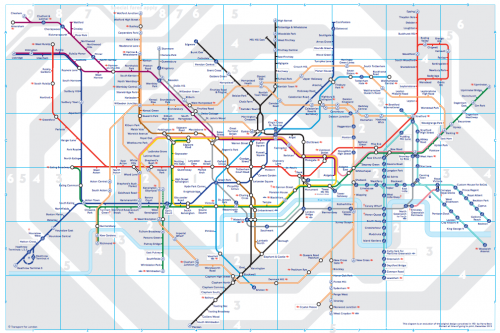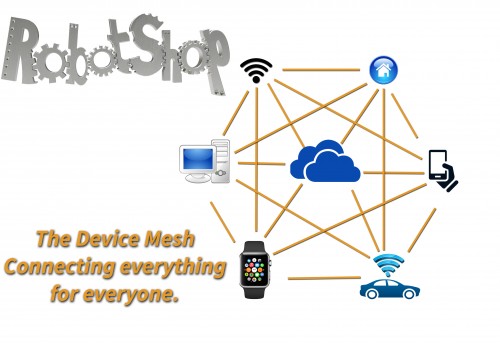Top Tech Trends for 2016 Part 2 - The Device Mesh

The Internet of Things (IoT), is the network of physical objects such as wearable devices, automotive, buildings, homes and much more embedded with electronics, software, sensors and network connectivity that enables these objects to collect and exchange data.
In consumer robotics we see a few robotic household cleaning devices natively with network connectivity. Such as the Neato Botvac Connected, the Robomow Robot Mower, soon to be the Litter-Robot Open Air and certainly many more to come. This is only a very small fraction of things with network connectivity. All of these devices gather information through sensors during their daily activities. Currently all these devices function with apps made specifically for each device and are connected through a WiFi network.
Let's say you have a smart home, and it's all connected to your home WiFi network; lights, heating or cooling, garage door and more. They can be controlled from one app or maybe a few different apps since these smart devices are purchased from different manufacturers. You can also have a smart dishwasher, oven, washer and dryer and these all require different apps to function from a distance and they also don't communicate with one another. Wouldn't it be simpler if all these devices in your home could be controlled from one single app?
For example, you just receive your new robotic lawnmower and you have to set it up, install the perimeter wire and calibrate the mower for your lawn. In a near future this will not be necessary, because in you neighborhood there will be hundreds maybe thousands of robots, wearables and other devices communicating with each other at all times, sending valuable information about terrain, weather and much more. Right out of the box after its first charge your new robotic lawnmower will receive all this data and will be ready for the first cut without any further setup, since it is using many devices around it to navigate much like a sonar device.
The following example will help everyone understand the Device Mesh correctly and what role it will play in everything we use. Imagine that you are a structure of valuable data, and wherever you go you need to receive data in order to keep up and be in sync with everything around you. If you use your car to transfer this data, it is similar as using a point to point connection. What if your car breaks? That's the end of the road for many. Now same thing but this time you are taking the metro system, the line you are on all of sudden fails to operate, you therefore get off the wagon and transfer onto another line to get back to your original line. This is possible because there are many cross platform stations. If we add more options, within a few fractions of a second you are able to sync with everyone around to find someone that is going where you are going, than you can transfer the needed data and let this person deliver the data for you.
In some way common transport has been using the principal of mesh network for transportation for many, many years now. In the picture below you can see a quick look of London's underground transport system. The next picture after will show an example of a Mesh Network, find any similarities?
Those cross platforms from the metro stations look very similar to the many different end points of the mesh network. In 2016 there will have a big push towards The Device Mesh, bringing and compiling sensors, devices, wearable and robots all in one place where information is shared.
The next video explain how a mesh network function, imagine the same but with all connected devices, sensors, wearables, routers, laptops, computers and even cars.
Sources. :
http://www.forbes.com/sites/alexknapp/2011/12/22/myrobots-com-aims-to-be-facebook-for-robots/#3485276071f1
https://www.newscientist.com/blogs/onepercent/2011/12/facebook-for-robots-helps-droi.html?DCMP=OTC-rss&nsref=online-news
https://en.wikipedia.org/wiki/Internet_of_Things
http://internetofthingsagenda.techtarget.com/definition/mesh-network-topology-mesh-network
Thanks for helping to keep our community civil!
Notify staff privately
You flagged this as spam. Undo flag.Flag Post
It's Spam
This post is an advertisement, or vandalism. It is not useful or relevant to the current topic.
This post is an advertisement, or vandalism. It is not useful or relevant to the current topic.
You flagged this as spam. Undo flag.Flag Post




